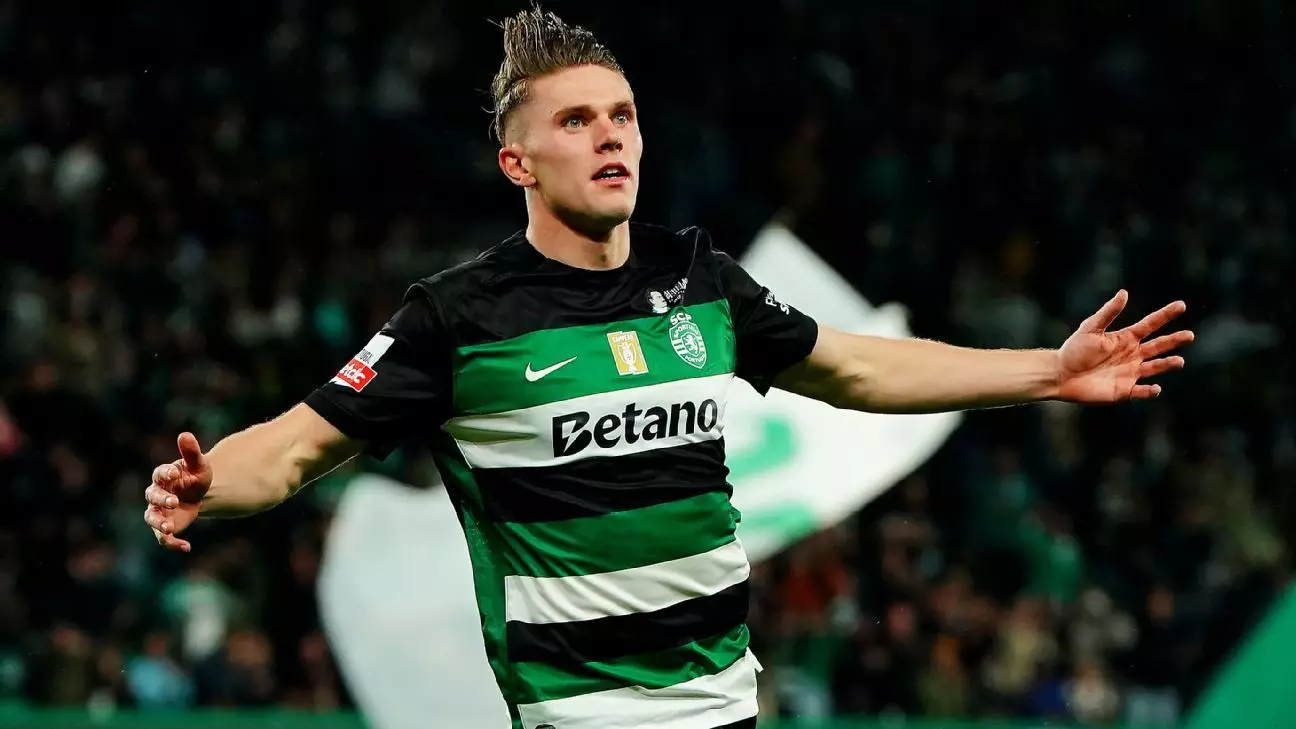One of the most intriguing narratives unfolding on the football transfer horizon centers around Viktor Gyökeres and his potential departure from Sporting CP. The young Swedish striker has expressed a clear desire to move to Arsenal, viewing such a transfer as a defining step in his career. However, Sporting’s stance complicates matters, as they appear resolute in their valuation and stance, with sources hinting at a €70 million asking price and a willingness to include significant variables. Gyökeres’ stance is equally firm; reports suggest he might even initiate a strike to force the move, highlighting his unrelenting pursuit of a “dream” transfer. This situation epitomizes a broader trend in modern football, where player ambition directly clashes with club valuation, often leading to high-stakes negotiations and public drama.
Arsenal’s confidence in closing this deal indicates a strategic shift—prioritizing key targets to bolster their attacking options. The timing couldn’t be more significant, with the club having already secured Martín Zubimendi for €60 million. These acquisitions signal a deliberate effort to reshape their squad faster than their rivals. Gyökeres’ potential move underscores a fundamental aspect of contemporary football: talent acquisition is as much about signaling intent as it is about immediate team needs. The outcome of this saga could redefine Arsenal’s attacking core and serve as a blueprint for future bold moves.
Manchester United’s Calculated Hunt for Attacking Reinforcements
Manchester United’s transfer strategy this window reveals a blend of patience and strategic opportunism. Their emerging interest in Dominic Calvert-Lewin is a prime example, reflecting their desire to bolster their attack without overextending financially. After leaving Everton on a free transfer, Calvert-Lewin’s profile as a seasoned, goal-oriented forward fits the club’s tactical vision. Despite persistent injury issues, United’s interest signals their belief in his talent—if they can manage his fitness concerns.
What’s particularly noteworthy is the club’s approach of delaying the integration of wantaway stars, a move that hints at internal negotiation complexities and a desire to maintain squad harmony. United isn’t rushing into signings but rather exploring options that could bring immediate impact. With the club eyeing long-term success, acquiring a versatile forward like Calvert-Lewin could be a tactical masterstroke, provided they can optimize his resilience. It also signals a broader willingness to challenge the traditional transfer market norms—signing free agents and undervalued players to build sustainable squads.
The Battle for Emerging Young Talent and the Future of the Premier League
The future of European football is increasingly defined by the rise of promising youth players and the strategic moves clubs make to secure their development. Ethan Nwaneri’s contract negotiations at Arsenal exemplify this focus. The 18-year-old prodigy commands attention, but his reluctance to commit without clear assurances about game time underscores the importance of player empowerment in modern transfers. The intrigue intensifies with Chelsea’s interest, signaling a potential competition for emerging talent that could reshape squad dynamics.
Similarly, Noni Madueke’s high-value move to Arsenal, valued over €50 million, demonstrates how top clubs are willing to invest heavily in young talent, betting on potential over experience. These investments highlight a shift toward a more talent-centric transfer market—one where youth, versatility, and future potential outweigh immediate squad reinforcement.
The broader picture underscores how Premier League clubs are not just reacting but actively shaping the future of football through strategic investments. Clubs like Brighton signing Maxim De Cuyper from Belgium reflect a focus on long-term squad building. Meanwhile, Wrexham’s record-breaking signing of Lewis O’Brien at a £5 million fee for a club with modest means sheds light on how ambitious clubs are pushing financial boundaries to climb the ladder.
Reconfiguring Defensive and Midfield Powerhouses in Europe
In the defensive domain, Barcelona’s decisions reveal a pragmatic approach, opting not to pursue Denzel Dumfries after assessing their squad depth. Decisions like these demonstrate a nuanced understanding of immediate needs versus future squad stability. Yet, elsewhere in Europe, teams remain aggressive—interested in players like Jules Koundé, and the movement of high-profile defenders hints at a reconfiguration of European power centers.
Midfield dynamics are equally bustling. Napoli’s active pursuit of Dan Ndoye and the exchange of documents with PSV highlight the tempo of player swaps and strategic squad adjustments. Additionally, Juventus’ interest in players like Sandro Tonali and Davide Frattesi indicates a desire to restore their midfield dominance, especially with the ongoing departure of more seasoned stars. These movements are more than tactical—they are symbolic of the continuous battle for supremacy in European football, where every transfer can influence league standings and long-term dominance.
Excellence in the Transfer Market: Risks and Rewards
The current transfer window is a testament to the increasing importance of shrewd financial strategy. Clubs like Napoli, Galatasaray, and even newly promoted teams are leveraging release clauses, development fees, and lucrative loan deals to navigate a landscape filled with financial uncertainties yet ripe with opportunity. Napoli’s willingness to pay €75 million for Victor Osimhen reflects an aggressive stance, prioritizing proven talent to enhance their Champions League ambitions.
However, the strategic risk of overpaying or miscalculating player fit remains high. The juggling act involves balancing immediate impact with long-term stability—a lesson reinforced by high-profile missteps in recent years. Astonishingly, clubs like Flamengo and Fenerbahçe are also positioning themselves as active participants, emphasizing that flux and strategic risk-taking characterize the modern transfer period. The outcome depends on how well clubs calibrate their investments—those who succeed will likely be the ones willing to take calculated risks on young talent, proven stars, and shrewd financial maneuvers.
Note: This analysis challenges the notion of football transfers as mere transactional events—it’s a vibrant ecosystem where strategy, ambition, and vision collide, defining the future of the sport. The ongoing shifts reflect an unrelenting quest for excellence, dominance, and legacy—driving clubs to take bold risks in pursuit of glory.

Leave a Reply